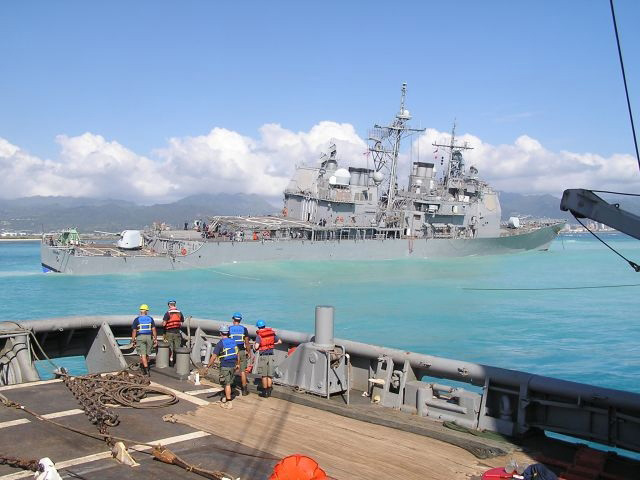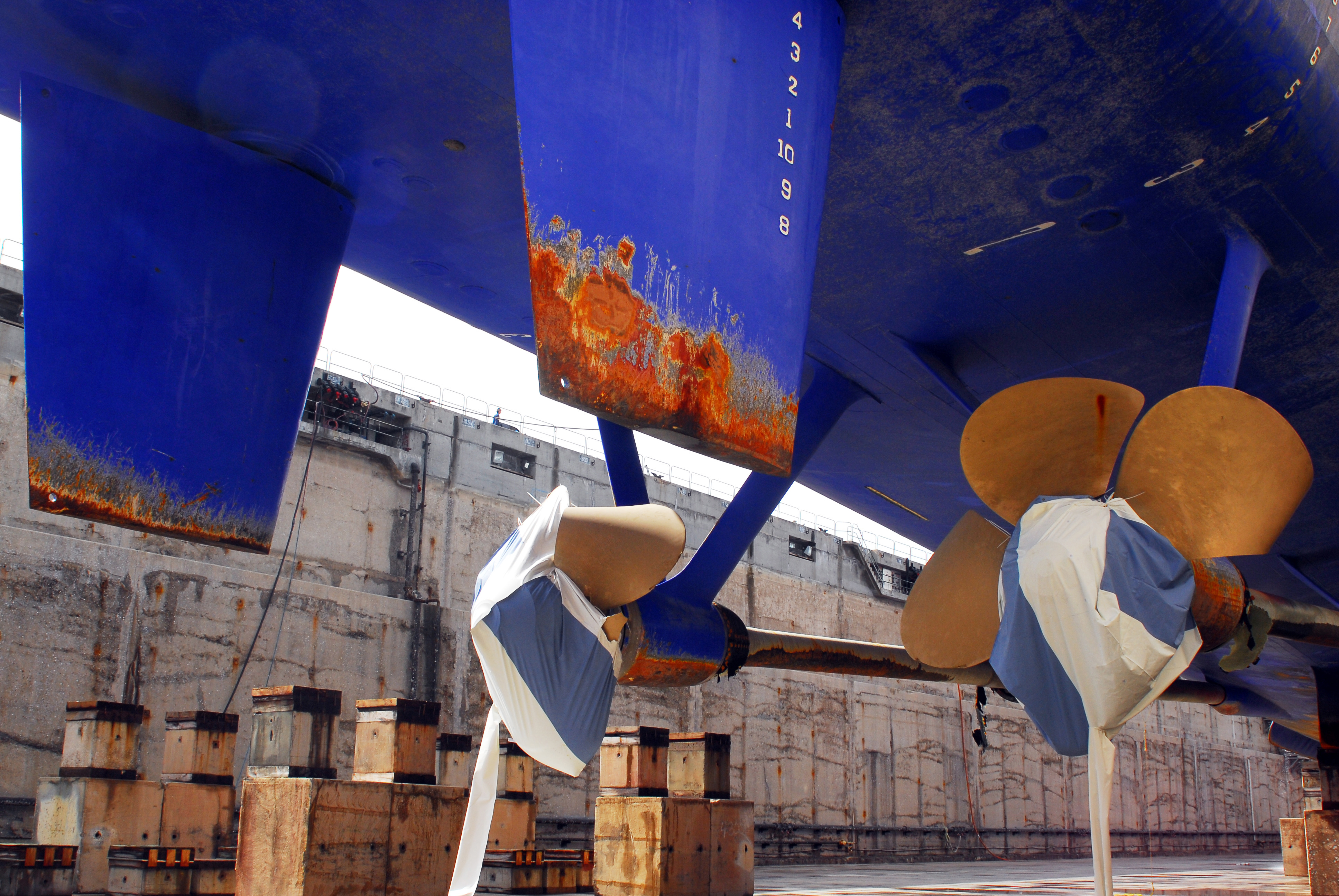(
Note: In the above picture, a U.S. Navy P-3C Orion maritime surveillance aircraft flies overhead while the Navy survey ship USNS BOWDITCH (T-AGS 62) stands by at left, and the Philippine Coast Guard ship BRP Corregidor observes from the right.
- BBC, January 25, 2013
A US Navy minesweeper stuck on a coral reef in a Unesco heritage site off the Philippine coast is badly damaged and taking in water, officials say.
The USS Guardian struck the reef in the Sulu Sea south-east of Palawan island last Thursday after completing a port call at the former Subic Bay base.
US officials say a salvage operation could take weeks to complete.
The reef is in the Tubbataha National Marine Park, designated a World Heritage Site by Unesco.
There had been hopes that the ship could simply be towed off the reef, but officials said the vessel was too badly damaged for that and that the first priority was to pump fuel out of the ship as it was being battered by rough waters.
PanAsian said:
Glad that a concrete solution is on its way. How does a crane get into place to pick up the ship? Would the crane be part of the lift ship itself or a separate floating rig?
Well, if they could pull the vessel off the reef, then the heavy lift vessel could come along side, lower her lift deck into the water deep enough to allow it to get underneath the USS Guardian and then lift the Guardian out of the water onto that deck...and off they would go. Like they did with the USS Cole. But, apparently the vessel is too hard aground to allow her being pulled off.
What this probably means is that large holes have been broken through the hull where the reef itself is sticking through and any effort to pull her off would simply rip her open and cause her to sink as soon as she got off the reef and into deep water. The hull of the USS Guardian is made of wood.
So, now they are talking about bringing in a large crane ship. That vessel will have to manuever alongside the Guardian and literally lift her out of the water and then onto either its own deck, or, more likely, onto the deck of a heavy lift vessel.
Either way, special attachments have to be designed and then fabricated and welded to the deck of whichever vessel is going to carry her off so that she is secure on that deck for whatever sea and weather conditions they may face before getting her to port. That process of design and fabrication and the attachment to the deck can take several days itself before the vessel can even be lifted.
It is going to be a very tricky and dicey situation, depending especially on the sea state and the currents, to have that larger crane ship so close to the reef itself so she can lift the vessel and place her on deck. She will have to be very close to the USS Guardian so no appreciable moment arm is generated, but that means there has to be deep enough water for the crane ship to do so.
From the following picture, taken early on in the grounding, I believe there is. See just aft of the large spool near the stern of the vessel how the water drops off so rapidly?
So right there we see deep enough water, but it is exremely percipitous in how quickly it goes shallow there. If the crane ship itself is driven onto the reef, either by wind and waves or current...then things just got a lot worse.




